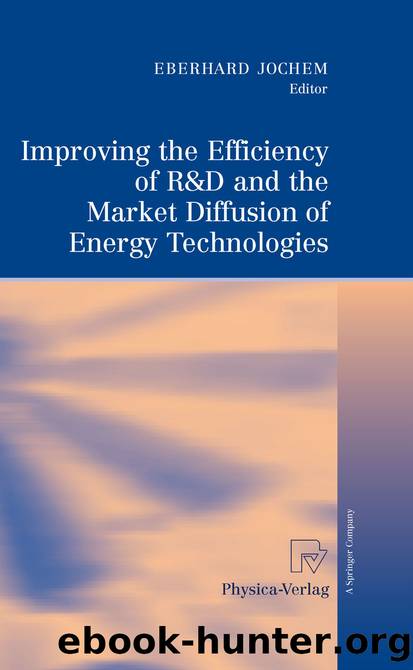Improving the Efficiency of R&D and the Market Diffusion of Energy Technologies by Eberhard Jochem

Author:Eberhard Jochem
Language: eng
Format: epub
Publisher: Physica-Verlag HD, Heidelberg
5.3.2.1.3 Architects
Although we can observe a dynamic interest in passive buildings and positive prospects among the actors involved, the passive house – in relation to all realized buildings – still remains a niche product. Architects with efficiency and experience in designing and planning passive buildings also suffer from the low number of realized units per architect. The required development in systems integration knowledge remains almost constant for any given number of units. Detailed knowledge on the planning and design of foundations, thermal bridges and their avoidance, the sizing of the ventilation system etc. is required for the first passive house built by any planner. The necessary novel workflow and the required precision of work not only challenge architects’ established procedures and routines; they also challenge their communication principles and their cooperation routines.
As a passive building requires the seamless integration of several (complex) components and a reliable and knowledgeable site manager, the working processes on the construction site have to be adapted to meet the passive house standard (see e.g. Horn, 2005). The quality of execution is a crucial factor in building a passive house. New ways of quality assurance and quality management demand new procedures such as the blower-door test. Beyond updating the routines and the processes for planning and erecting a passive building, this requires the architect to communicate new tasks which have to be paid for by the customer. There are strong incentives for the architect to avoid these discussions with hesitant clients by cutting short the requirements for a passive building and suggesting a low-energy building instead.
Although architects were doubtful about the strict technical requirements (e.g. relatively voluminous insulation etc.) for passive buildings early on, many have since realized that passive buildings can also be designed in an aesthetic way (Plöderl, 2005). Documentation material by the IG Passivhaus (www.igpassivhaus.de; www.igpassivhaus.at; www.igpassivhaus.ch) vividly demonstrates that energy efficiency and aesthetic buildings are not contradictory principles. Indeed passive buildings may even have design advantages since they do not require radiators in the buildings; ceiling to floor glazing can be implemented without the obstruction of radiators in front of the windows.
Download
This site does not store any files on its server. We only index and link to content provided by other sites. Please contact the content providers to delete copyright contents if any and email us, we'll remove relevant links or contents immediately.
International Integration of the Brazilian Economy by Elias C. Grivoyannis(57323)
The Radium Girls by Kate Moore(10907)
Turbulence by E. J. Noyes(7039)
Nudge - Improving Decisions about Health, Wealth, and Happiness by Thaler Sunstein(6633)
The Black Swan by Nassim Nicholas Taleb(6191)
Pioneering Portfolio Management by David F. Swensen(5606)
Rich Dad Poor Dad by Robert T. Kiyosaki(5149)
Zero to One by Peter Thiel(4824)
Man-made Catastrophes and Risk Information Concealment by Dmitry Chernov & Didier Sornette(4736)
Secrecy World by Jake Bernstein(3782)
Millionaire: The Philanderer, Gambler, and Duelist Who Invented Modern Finance by Janet Gleeson(3569)
Skin in the Game by Nassim Nicholas Taleb(3460)
The Age of Surveillance Capitalism by Shoshana Zuboff(3422)
The Money Culture by Michael Lewis(3284)
Skin in the Game: Hidden Asymmetries in Daily Life by Nassim Nicholas Taleb(3264)
Bullshit Jobs by David Graeber(3180)
The Dhandho Investor by Mohnish Pabrai(3168)
The Wisdom of Finance by Mihir Desai(3078)
Blockchain Basics by Daniel Drescher(2891)
